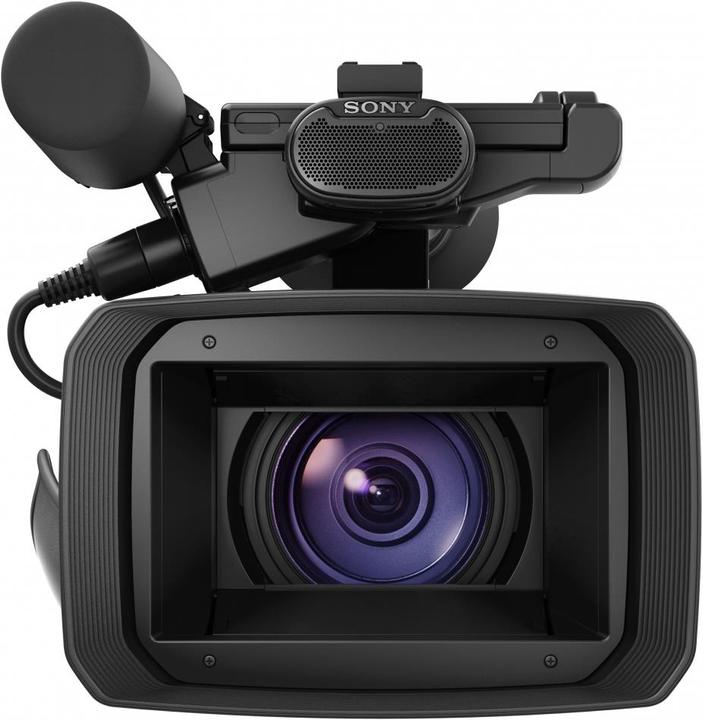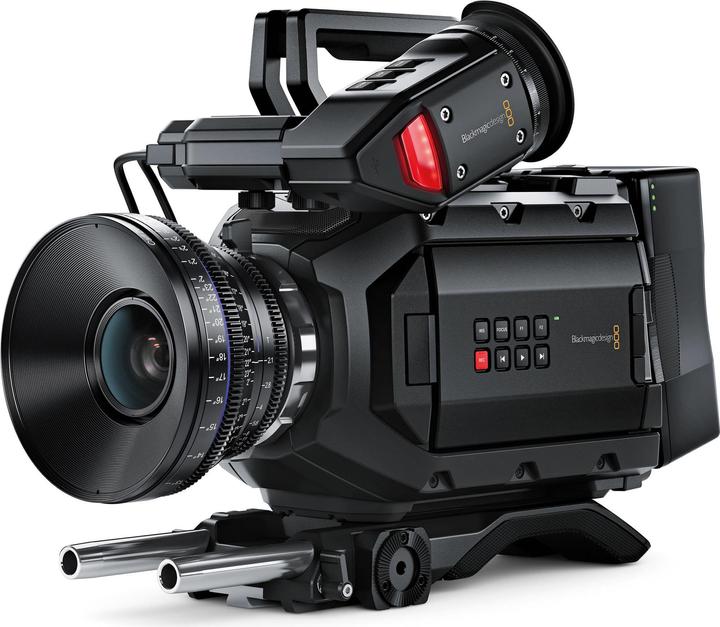
Briefly explained: 8bit vs. 10bit or expensive system camera vs. smartphone
The LG V30 can do 10bit video. As a video producer, I absolutely had to try it out. Find out what 10bit is all about and how it performs against our much more expensive Sony cameras here.
The number of colours that a camera records is measured in the so-called bit depth. The standard for most cameras, including our Sony A7s II, is currently 8bit and records 16.7 million colours. More and more cameras are now coming onto the market that are capable of 10bit. The LG V30 is also the first smartphone to be available with this feature. So it's high time to explain bit depth.
The bit depth at which videos are recorded makes a big difference, especially in the post-production of the clips. A video recorded at 10bit contains much more information than an 8bit file. To be precise, an 8bit image can display 256 (2^8) colour tones per colour channel (green, red, blue). 10bit can display 1024 (2^10) colour tones. But now everything slowly and in order.
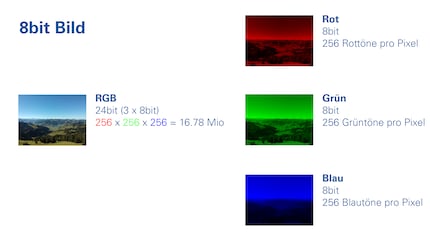
Composition of an 8bit image
A frame in a video always consists of three colours: red, green and blue. In technical jargon, this is abbreviated to RGB. Sometimes an alpha channel is added, which records transparency values. Each of these three colours can represent 256 shades if the recording is made with 8-bit depth. If the depth is 10bit, as is the case with the LG V30, 1024 different colours can be recorded per channel. To simplify things, let's just take a black and white image. The enlarged and somewhat exaggerated image below shows that the gradient from black to white is much finer in the 10bit image.
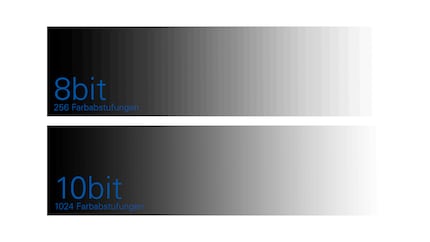
The human eye
The human eye can distinguish around 20 million colour tones. An 8-bit image consists of 16.7 million colours (256 shades of blue * 256 shades of red * 256 shades of green). A 10-bit image, however, consists of around one billion colours. Almost every screen - whether smartphone, tablet, PC or TV - can only display 8-bit colours. YouTube also compresses every video to 8bit, as a 10bit recording would hardly achieve anything except much larger amounts of data.
- Human eye: can distinguish around 20 million colours
- 8bit video: 16.7 million colours
- 10bit video: 1.07 billion colours
- RAW photo (14bit): 4.39 trillion colours
- JPEG photo (8bit): 16.7 million colours
What's the point of 10bit?
For the majority of users, it makes no difference whether or not 10-bit recording is possible. Film professionals, however, swear by 10bit or more. And there is a reason for this: the multiple colour information in a pixel makes it possible to make colour corrections far better and more accurately than is the case with an 8-bit image. Dark and light areas in particular can be adjusted much better to your own requirements. In colour gradients, such as the sky in which there are many blue tones, so-called banding often occurs with a lower colour depth. In other words, the sky looks as if it is made up of blue stripes.
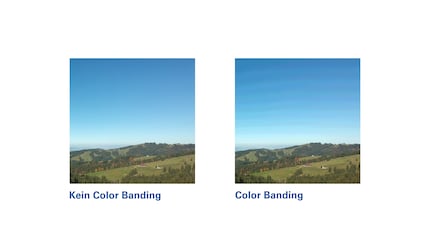
The colour banding effect visualised
The LG V30 versus the three times more expensive Sony A7s II
Because I want to know what the LG V30 can really do and because digitec works with Sony cameras, namely the A7s II, I'm simply taking the two out for a few hours and comparing them directly with each other. With the LG set to manual mode, LG Log Format switched on and connected to the hot shoe of the Sony, you're ready to go. The LG camera has a focal length of around 30mm. I set this on the 24-70mm lens and don't change it. This is the only way I can always capture the same section. I also film with a high f-number to achieve a shallow depth of field.
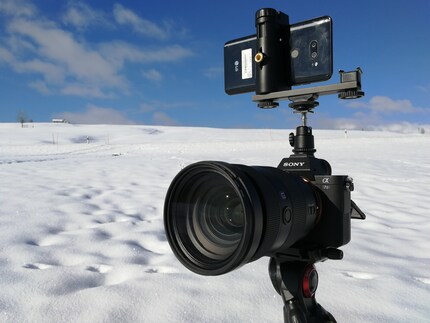
Camera and smartphone

To extend the dynamic range, I can record with the V30 in LG Cine-Log format. The log format makes the image look flat and desaturated. In post-production, however, it is possible to edit the image more and adapt it more precisely to my needs. The LG Cine-Log format has a relatively strong yellow tint. To compensate for this, there are so-called LUTs, which LG provides here. LUT stands for Look Up Table, which is a type of colour profile that can be used to give a flat log format a neutral appearance again. These can simply be placed over the image in the video software (including Adobe Premiere Pro or the freeware DaVinci Resolve). Once a LUT is on the image, the colours can then be adjusted to suit your own requirements.

A before-and-after comparison and a direct comparison of the two cameras in the video: [[video:69726]]
The differences in detail and sharpness between the two cameras: [[video:69727]]
Comparing the images from the two cameras proved to be very difficult. The blue colour of the two devices in particular gave me a headache. Nevertheless, the before and after results of the V30 are amazing. Despite a very flat and dull-looking picture, I achieve respectable results. When the image is enlarged, qualitative differences become apparent. The smartphone's image appears blurred and muddy.
What the LG V30 and all other smartphones lack, however, is a lossless zoom function and depth of field. Due to the small sensor and the fixed aperture, playing around with blurred backgrounds or foregrounds is only possible to a limited extent. With any other, larger camera, the film-maker has much more creative freedom thanks to different focal lengths, aperture values and other tools. Thanks to the lens and large sensor, the image from the Sony A7s II often appears spatially deeper and less flat than the shots from the LG V30.
Now I want 10bit too
If you already have an expensive system camera, for example from Sony, and also want to film 10bit, you don't have to buy a new camera straight away. With an external recorder like the one from Blackmagic, 4k films can be recorded in 10bit. You'll have a bit more equipment and no longer just the camera with you, but you'll have saved a lot of money.
However, if you want to buy a new camera anyway and have a budget and ambitions to make significant changes to your image in post-production, there are cameras that don't require an external recorder. For example, this one here:
In my opinion, the Panasonic GH-5 is the most interesting camera of the four shown in terms of price and functionality. It is possible to make internal 422-10bit 4k video recordings. You have a camera in a really small form factor that is in no way inferior to the larger devices.
Or would you prefer something a little more expensive and better? Then a camera from Red or one from Canon.
As a Multimedia Producer, preparing multimedia content and knowing about cutting-edge technology is my business. My main focus at digitec is producing videos. I can’t wait to try out new products such as cameras, drones or smartphones as soon as they’re launched. This is where being at the source comes in rather handy. When I’m not working, I’m probably skiing, biking or hiking – the mountains are my place to be.
Interesting facts about products, behind-the-scenes looks at manufacturers and deep-dives on interesting people.
Show all



